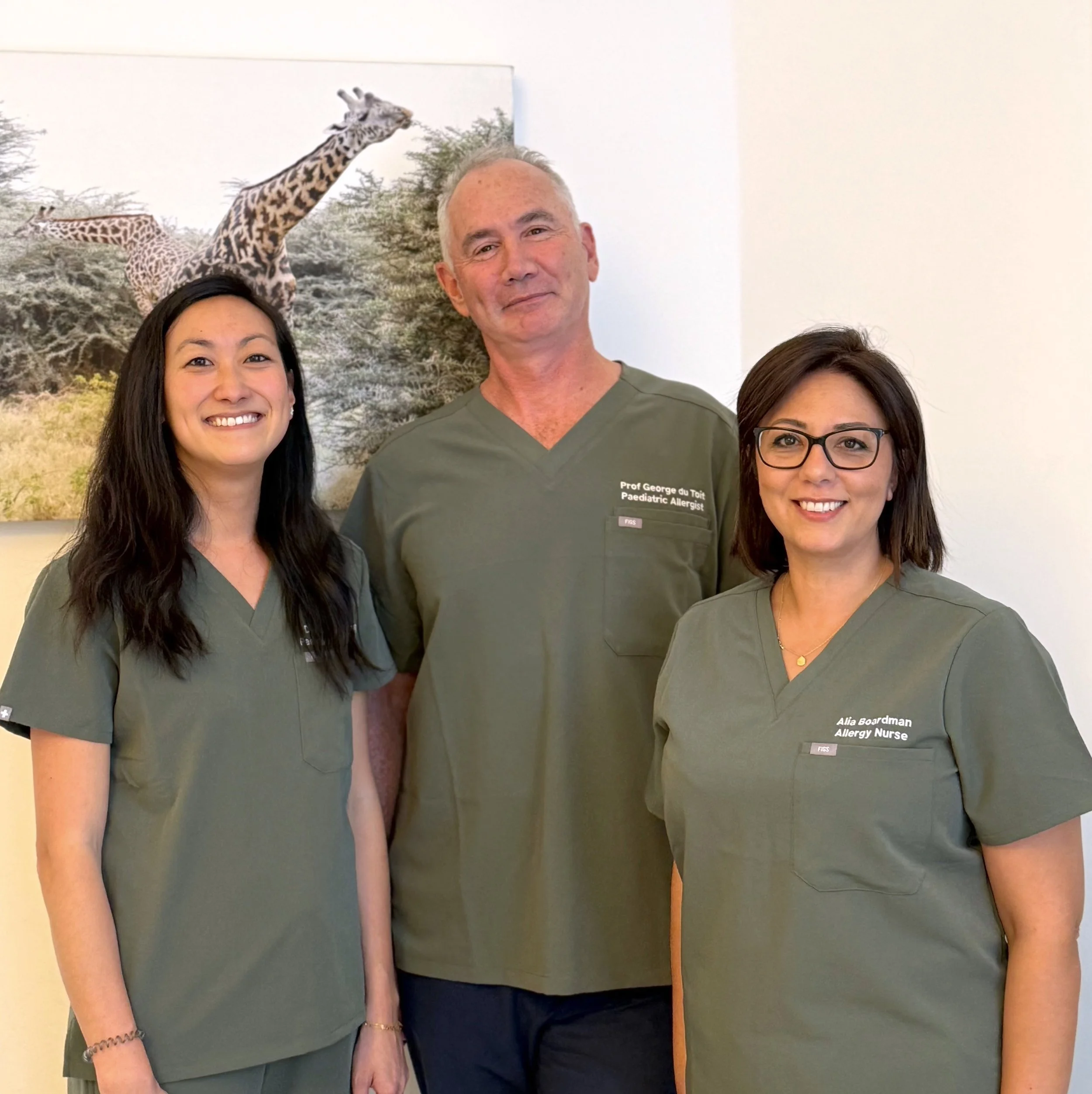Hypo Allergenic Dogs - do they exist?
Hypoallergenic Dogs and Dog Allergies: Clarifying the Facts
Patients with allergies and their families often inquire about the validity of claims regarding the hypoallergenicity of certain dog breeds. Hypoallergenic dogs are typically described as breeds that are believed to produce fewer allergens, making them more tolerable for individuals with dog allergies. Current evidence does not support the existence of truly hypoallergenic dog breeds; all dogs produce allergens, as they are living mammals.
Studies have shown that all dogs produce allergens, primarily a salivary protein called Can f 1, and that so-called hypoallergenic breeds do not have lower levels of this allergen in their hair, coat, or home environment compared to non-hypoallergenic breeds.
Can f 1 is the most significant and prevalent allergen found in dogs. It is a type of protein known as a lipocalin, which plays a role in transporting small molecules. While dogs produce several allergenic proteins (including Can f 2, Can f 3, etc.), sensitisation to Can f 1 is the most common and affects the majority of individuals with dog allergies. Traditionally, allergy tests have used a whole extract of dog dander, which contains a mix of all dog proteins. While this can confirm a dog allergy, it does not identify the specific molecule causing the reaction. We routinely perform SPT for dog allergy and Component IgE tests for dog allergen, including Can f 1.
The primary source of Can f 1 is a dog's saliva, produced in the epithelial tissue of the tongue. When dogs lick and groom themselves, this protein gets spread onto their skin and fur. As the skin cells are shed (as dander) and fur falls out, the allergen becomes airborne. These tiny particles, often invisible to the naked eye, can remain suspended in the air for extended periods and settle on surfaces throughout homes. This explains why individuals can experience allergic reactions even without direct contact with a dog. Notably, because Can f 1 is microscopic and easily transported, it can be found almost everywhere, including on clothes and in homes and public spaces without resident dogs.
While the amount of allergen shed can vary between individual dogs, no breed is truly allergen-free. Studies have found that hypoallergenic breeds do not necessarily have lower levels of Can f 1 in their environment compared to other breeds.
Sensitisation to Can f 1 not only triggers common allergic rhinitis symptoms, such as sneezing and a runny nose, but is also strongly associated with more severe respiratory issues, particularly asthma. For individuals predisposed to asthma, chronic exposure to Can f 1 can lead to airway inflammation and an increased risk of asthma attacks. The level of IgE antibodies—the antibodies responsible for allergic reactions—against Can f 1 often correlates with the severity of asthma symptoms in patients with dog allergies.
Component testing assists with:
Accurate Diagnosis: Confirms that Can f 1 is the specific trigger and rules out cross-reactivity with other proteins.
Risk Assessment: A high level of sensitisation to Can f 1 can indicate a greater risk of persistent symptoms and asthma.
Informed Management: Knowing the specific allergen allows for more targeted advice and treatment strategies.
Management:
1. Avoidance and Environmental Control:
- Create pet-free zones in the home (if a pet dog is already owned), especially in the bedroom where hours are spent each day (hopefully).
- Use high-efficiency particulate air (HEPA) filters to remove airborne allergens.
- Regularly, thoroughly, clean carpets, upholstery, the pet dog, and their bedding.
- Wash hands thoroughly after contact with a dog or the dog's bedding, toys ….
2. Medications:
- Over-the-counter or prescription non-sedating antihistamines can help manage symptoms like itching, sneezing, and a runny nose. These can be taken prophylactically if exposure to dog allergens is anticipated.
- Nasal corticosteroid sprays can reduce nasal inflammation.
- For individuals with asthma, prescribed inhalers are essential.
3. Allergen Immunotherapy:
- For severe or persistent allergies, especially of dog exposure, which can not easily be avoided (family members’ own pets, people working in the related industries, guide dogs…), we recommend Sub-Lingual Immunotherapy (SLIT) using recombinant or allergoid dog allergen extract.
This treatment involves administering gradually increasing doses of the allergen to desensitise the immune system and reduce the allergic response over time. Identifying specific sensitisation to Can f 1 can help tailor this therapy more effectively. This process will require daily dosing of a liquid product under the tongue, kept for a minute before swallowing, and taken for up to three years.
We inform patients that if they have had past reactions or asthma is unstable, and test results are high, it is not safe to obtain a non-allergenic or hypoallergenic dog, as all dogs produce at least one allergen. Allergen levels in homes with hypoallergenic dogs are similar to those with other breeds, and individual variability in allergen production is greater than breed differences. If acquiring a dog is a ‘show stopper’, we advise exposure to the particular breed on a few occasions to assess for controlled reactivity. It is an emotional issue to have to rehome a pet, so it's best to be sure prior to the dog entering your lives.
In summary, the concept of hypoallergenic dogs is not supported by medical literature, and no breed can be reliably recommended as hypoallergenic for patients with dog allergies.
Frequently Asked Questions
-
Dog food containing antibodies to dog saliva allergens is not supported in the medical literature. There is no established evidence or clinical consensus supporting the use of dog food formulated with antibodies to dog saliva allergens for the prevention or treatment of allergic reactions in dogs or humans.
The concept of using antibodies in dog food to neutralise saliva allergens is not described in any of the referenced veterinary or allergy literature. While dog saliva is a significant source of allergens relevant to human allergy diagnostics and immunotherapy, the medical literature focuses on allergen identification, diagnostic methods, and immunotherapy approaches such as sublingual immunotherapy—not on dietary antibody supplementation.
-
Vaccinating the dog to reduce allergen production: This is an area of research, but currently, no intervention targeting the dog, including vaccination, has been shown to decrease Can f 1 levels.
-
Breed, sex, neutered status, age, and color of a dog do not reliably predict the level of allergenicity or the risk of dog allergy in humans.
All dogs produce allergenic proteins, primarily Can f 1, and so-called "hypoallergenic" breeds do not have lower environmental allergen levels than other breeds.
The American Academy of Allergy, Asthma, and Immunology specifically states that no breed can be considered nonallergenic.
Studies show that while there is variability in Can f 1 production between individual dogs and some breeds (e.g., Labradors tend to have lower fur Can f 1 than Poodles or Yorkshire Terriers), these differences are small compared to the variability within breeds and do not translate into clinically meaningful differences in household allergen exposure.
Neutered dogs may shed more allergen into the environment than unaltered dogs, but this is not a consistent finding across all studies and does not reliably affect human allergy risk.
Dog age and coat color have not been shown to affect allergenicity in a way that impacts human allergic sensitization.
The most important determinants of sensitization are host factors (such as family history, atopy, and environmental exposure) rather than dog characteristics.
In summary, no specific dog breed, age, color, sex, or neutered status can be recommended to reduce the risk of dog allergy. Allergen exposure control should focus on environmental management rather than selection of dog characteristics.
Worried About Allergies? Let’s Help You Get Answers
If your child is showing signs of a food, pollen, or skin allergy, early diagnosis is key. At London Allergy Consultants, our expert team provides trusted, evidence-based care tailored to your child’s needs. From testing to treatment plans, we guide you every step of the way.
London Allergy Consultants
London Allergy Consultants is a leading UK centre for diagnosing and treating food and airborne allergies in children and young people.






The allergic march, aka the atopic march, is a concept describing the possible progression of allergies through childhood.
The "march" is not universal or linear; trajectories vary, influenced by genetic predispositions, environmental exposures (e.g., the microbiome, pollutants), and immunologic factors.
Not all children follow the typical sequence; some skip stages, and others may have persistent or atypical patterns.